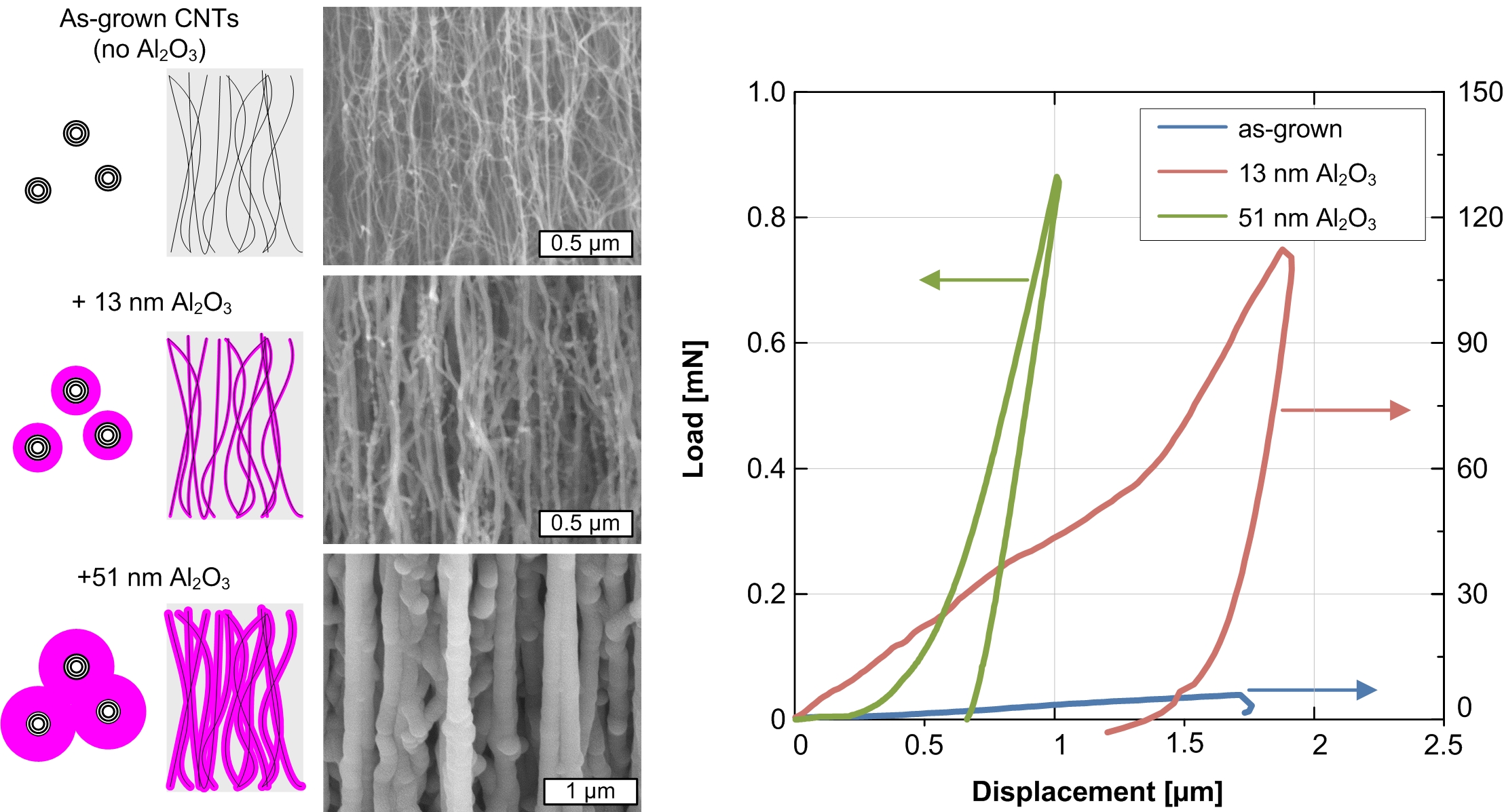
Year
2014Volume
24Issue
36Pages
5728–5735Abstract
Natural materials such as bone and tooth achieve precisely tuned mechanical and interfacial properties by varying the concentration and orientation of their nanoscale constituents. However, the realization of such control in engineered foams is limited by manufacturing-driven tradeoffs among the size, order, and dispersion uniformity of the building blocks. It is demonstrated how to manufacture nanocomposite foams with precisely controllable mechanical properties via aligned carbon nanotube (CNT) growth followed by atomic layer deposition (ALD). By starting with a low density CNT forest and varying the ALD coating thickness, we realize predictable ≈1000-fold control of Young’s modulus (14 MPa to 20 GPa, where E ∼ ρ 2.8), ultimate compressive strength (0.8 MPa to 0.16 GPa), and energy absorption (0.4 to 400 J cm–3). Owing to the continuous, long CNTs within the ceramic nanocomposite, the compressive strength and toughness of the new material are 10-fold greater than commercially available aluminum foam over the same density range. Moreover, the compressive stiffness and strength equal that of compact bone at 10% lower density. Along with emerging technologies for scalable patterning and roll-to-roll manufacturing and lamination of CNT films, coated CNT foams may be especially suited to multifunctional applications such as catalysis, filtration, and thermal protection.






